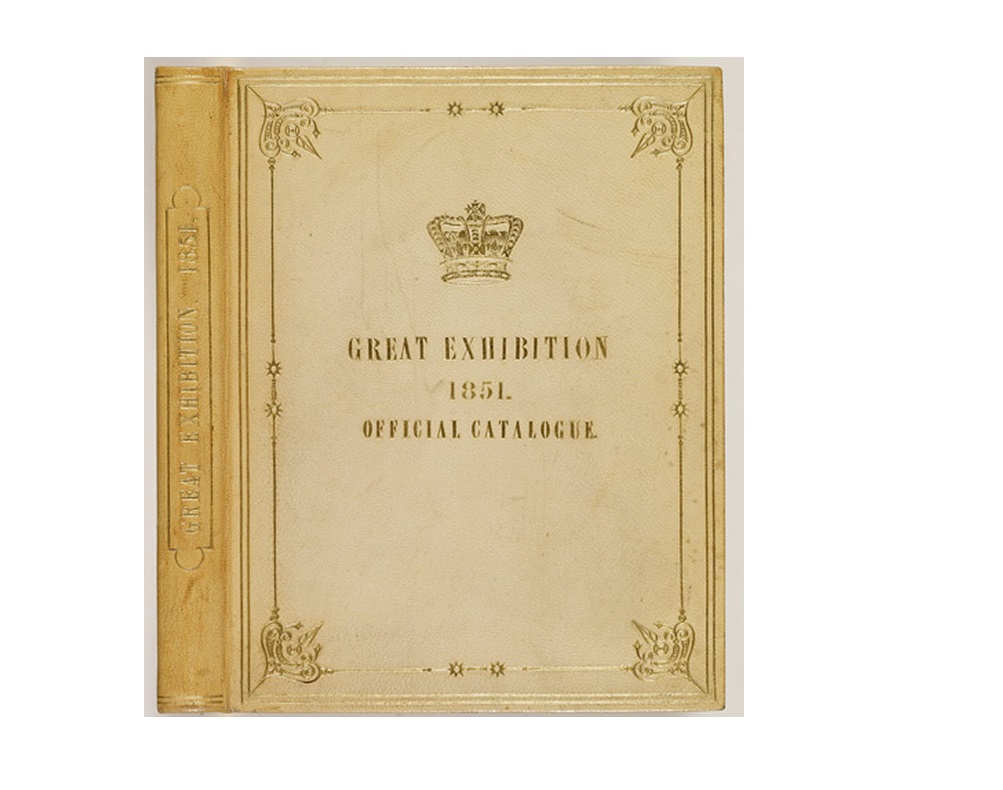Description
The Great Exhibition of the Works of Industry of all Nations or The Great Exhibition, sometimes referred to as the Crystal Palace Exhibition in reference to the temporary structure in which it was held, was an international exhibition that took place in London, from 1 May to 11 October 1851. The Great Exhibition was organized by Henry Cole and Prince Albert, husband of the reigning monarch, Queen Victoria. Its prime motive was for “Great Britain [to make] clear to the world its role as industrial leader.” Prince Albert, was an enthusiastic promoter of the self-financing exhibition, in which countries from around the world could display their achievements, Great Britain sought to prove its own superiority. The British exhibits at the Great Exhibition “held the lead in almost every field where strength, durability, utility and quality were concerned, whether in iron and steel, machinery or textiles.” Great Britain also sought to provide the world with the hope of better times to come. Europe had just struggled through “two difficult decades of political and social upheaval,” and now Great Britain hoped to show that technology, particularly its own, was the key to a better future.
It was a defining moment in the history of 19thc Britain. The country had been at peace over 35 years, since the defeat of Bonaparte at Waterloo, had strengthened its supremacy (for the time being) as the “Workshop of theWorld”, and had perhaps become rather complacent. The ensuing decade, would see war with Russia, and revolution in India (the “Mutiny”). The 1860s would see the rapid rise of the USA as an industrial power, accelerated by the Cvil War, and of Prussia, soon to lead a united Germany under Chancellor Bismark, So if 1851 was not the high tide mark of British prosperity, the water level was not rising as quickly as it had.
Admission prices to the Crystal Palace varied according to the date of visit, from three guineas (£311.05 in 2016) two guineas for a woman) for a season ticket, or £1 per day (for the first two days only), then reducing to five shillings per day (until May 22). The admission price was then further reduced to one shilling (£4.94 in 2016), per day – except on Fridays, when it was set at two shillings and six pence and on Saturdays when it remained at five shillings. The one-shilling ticket proved most successful amongst the industrial classes, with four and a half million shillings (£22,217,549 in 2016), being taken from attendees in this manner. In many respects, this mass attendance was one of the more important effects of the Exhibition. Apart from some local efforts in organising excursions (it is how Thomas Cook got his start), the Railway Companies regarded their principal business as coming from 1st and 2nd class passengers, thirds were regarded as a neccessary evil. The huge demand for cheap train tickets to see the exhibition caught them by surprise, revealing a mass travel market, prepared to spend reasonable sums for journeys over quite long distances, preferably in a vehicle with seats and a roof. The result was a modest improvement in the standards of third class carriages, the admittance of third class passengers to many trains which hitherto had been first and second only, and a huge upsurge in passenger revenues, with the value of third class ticket sales soon surpassing first and second combined.
PREVIEW BELOW – MAY TAKE A WHILE TO LOAD.

Reviews
There are no reviews yet.